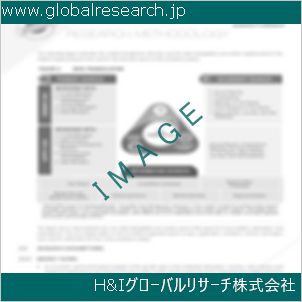Table of Contents
1 Industry Overview of Ferrovanadiumdust
1.1 Definition and Specifications of Ferrovanadiumdust
1.1.1 Definition of Ferrovanadiumdust
1.1.2 Specifications of Ferrovanadiumdust
1.2 Classification of Ferrovanadiumdust
1.3 Applications of Ferrovanadiumdust
1.3.1 Nuclear Application
1.3.2 Non-Nuclear Application
1.4 Industry Chain Structure of Ferrovanadiumdust
1.5 Industry Overview and Major Regions Status of Ferrovanadiumdust
1.5.1 Industry Overview of Ferrovanadiumdust
1.5.2 Global Major Regions Status of Ferrovanadiumdust
1.6 Industry Policy Analysis of Ferrovanadiumdust
1.7 Industry News Analysis of Ferrovanadiumdust
2 Manufacturing Cost Structure Analysis of Ferrovanadiumdust
2.1 Raw Material Suppliers and Price Analysis of Ferrovanadiumdust
2.2 Equipment Suppliers and Price Analysis of Ferrovanadiumdust
2.3 Labor Cost Analysis of Ferrovanadiumdust
2.4 Other Costs Analysis of Ferrovanadiumdust
2.5 Manufacturing Cost Structure Analysis of Ferrovanadiumdust
2.6 Manufacturing Process Analysis of Ferrovanadiumdust
3 Technical Data and Manufacturing Plants Analysis of Ferrovanadiumdust
3.1 Capacity and Commercial Production Date of Global Ferrovanadiumdust Major Manufacturers in 2023
3.2 Manufacturing Plants Distribution of Global Ferrovanadiumdust Major Manufacturers in 2023
3.3 R&D Status and Technology Source of Global Ferrovanadiumdust Major Manufacturers in 2023
3.4 Raw Materials Sources Analysis of Global Ferrovanadiumdust Major Manufacturers in 2023
4 Capacity, Production and Revenue Analysis of Ferrovanadiumdust by Regions, Types and Manufacturers
4.1 Global Capacity, Production and Revenue of Ferrovanadiumdust by Regions 2019-2024
4.2 Global and Major Regions Capacity, Production, Revenue and Growth Rate of Ferrovanadiumdust 2019-2024
4.3 Global Capacity, Production and Revenue of Ferrovanadiumdust by Types 2019-2024
4.4 Global Capacity, Production and Revenue of Ferrovanadiumdust by Manufacturers 2019-2024
5 Price, Cost, Gross and Gross Margin Analysis of Ferrovanadiumdust by Regions, Types and Manufacturers
5.1 Price, Cost, Gross and Gross Margin Analysis of Ferrovanadiumdust by Regions 2019-2024
5.2 Price, Cost, Gross and Gross Margin Analysis of Ferrovanadiumdust by Types 2019-2024
5.3 Price, Cost, Gross and Gross Margin Analysis of Ferrovanadiumdust by Manufacturers 2019-2024
6 Consumption Volume, Consumption Value and Sale Price Analysis of Ferrovanadiumdust by Regions, Types and Applications
6.1 Global Consumption Volume and Consumption Value of Ferrovanadiumdust by Regions 2019-2024
6.2 Global and Major Regions Consumption Volume, Consumption Value and Growth Rate of Ferrovanadiumdust 2019-2024
6.3 Global Consumption Volume and Consumption Value of Ferrovanadiumdust by Types 2019-2024
6.4 Global Consumption Volume and Consumption Value of Ferrovanadiumdust by Applications 2019-2024
6.5 Sale Price of Ferrovanadiumdust by Regions 2019-2024
6.6 Sale Price of Ferrovanadiumdust by Types 2019-2024
6.7 Sale Price of Ferrovanadiumdust by Applications 2019-2024
6.8 Market Share Analysis of Ferrovanadiumdust by Different Sale Price Levels
7 Supply, Import, Export and Consumption Analysis of Ferrovanadiumdust
7.1 Supply, Consumption and Gap of Ferrovanadiumdust 2019-2024
7.2 Global Capacity, Production, Price, Cost, Revenue, Supply, Import, Export and Consumption of Ferrovanadiumdust 2019-2024
7.3 USA Capacity, Production, Price, Cost, Revenue, Supply, Import, Export and Consumption of Ferrovanadiumdust 2019-2024
7.4 EU Capacity, Production, Price, Cost, Revenue, Supply, Import, Export and Consumption of Ferrovanadiumdust 2019-2024
7.5 China Capacity, Production, Price, Cost, Revenue, Supply, Import, Export and Consumption of Ferrovanadiumdust 2019-2024
7.6 Japan Capacity, Production, Price, Cost, Revenue, Supply, Import, Export and Consumption of Ferrovanadiumdust 2019-2024
8 Major Manufacturers Analysis of Ferrovanadiumdust
8.1 Manufacturer One
8.1.1 Company Profile
8.1.2 Product Picture and Specifications
8.1.2.1 Type I
8.1.2.2 Type II
8.1.2.3 Type III
8.1.3 Capacity, Production, Price, Cost, Gross and Revenue
8.1.4 Contact Information
8.2 Manufacturer Two
8.2.1 Company Profile
8.2.2 Product Picture and Specifications
8.2.2.1 Type I
8.2.2.2 Type II
8.2.2.3 Type III
8.2.3 Capacity, Production, Price, Cost, Gross and Revenue
8.2.4 Contact Information
8.3 Manufacturer Three
8.3.1 Company Profile
8.3.2 Product Picture and Specifications
8.3.2.1 Type I
8.3.2.2 Type II
8.3.2.3 Type III
8.3.3 Capacity, Production, Price, Cost, Gross and Revenue
8.3.4 Contact Information
8.4 Manufacturer Four
8.4.1 Company Profile
8.4.2 Product Picture and Specifications
8.4.2.1 Type I
8.4.2.2 Type II
8.4.2.3 Type III
8.4.3 Capacity, Production, Price, Cost, Gross and Revenue
8.4.4 Contact Information
8.5 Manufacturer Five
8.5.1 Company Profile
8.5.2 Product Picture and Specifications
8.5.2.1 Type I
8.5.2.2 Type II
8.5.2.3 Type III
8.5.3 Capacity, Production, Price, Cost, Gross and Revenue
8.5.4 Contact Information
…
9 Marketing Trader or Distributor Analysis of Ferrovanadiumdust
9.1 Marketing Channels Status of Ferrovanadiumdust
9.2 Traders or Distributors with Contact Information of Ferrovanadiumdust by Regions
9.3 Ex-work Price, Channel Price and End Buyer Price Analysis of Ferrovanadiumdust
9.4 Regional Import, Export and Trade Analysis of Ferrovanadiumdust
10 Industry Chain Analysis of Ferrovanadiumdust
10.1 Upstream Major Raw Materials Suppliers Analysis of Ferrovanadiumdust
10.1.1 Major Raw Materials Suppliers with Contact Information Analysis of Ferrovanadiumdust
10.1.2 Major Raw Materials Suppliers with Supply Volume Analysis of Ferrovanadiumdust by Regions
10.2 Upstream Major Equipment Suppliers Analysis of Ferrovanadiumdust
10.2.1 Major Equipment Suppliers with Contact Information Analysis of Ferrovanadiumdust
10.2.2 Major Equipment Suppliers with Product Pictures Analysis of Ferrovanadiumdust by Regions
10.3 Downstream Major Consumers Analysis of Ferrovanadiumdust
10.3.1 Major Consumers with Contact Information Analysis of Ferrovanadiumdust
10.3.2 Major Consumers with Consumption Volume Analysis of Ferrovanadiumdust by Regions
10.4 Supply Chain Relationship Analysis of Ferrovanadiumdust
11 Development Trend of Analysis of Ferrovanadiumdust
11.1 Capacity, Production and Revenue Forecast of Ferrovanadiumdust by Regions and Types
11.1.1 Global Capacity, Production and Revenue of Ferrovanadiumdust by Regions 2024-2029
11.1.2 Global and Major Regions Capacity, Production, Revenue and Growth Rate of Ferrovanadiumdust 2024-2029
11.1.3 Global Capacity, Production and Revenue of Ferrovanadiumdust by Types 2024-2029
11.2 Consumption Volume and Consumption Value Forecast of Ferrovanadiumdust by Regions, Types and Applications
11.2.1 Global Consumption Volume and Consumption Value of Ferrovanadiumdust by Regions 2024-2029
11.2.2 Global and Major Regions Consumption Volume, Consumption Value and Growth Rate of Ferrovanadiumdust 2024-2029
11.2.3 Global Consumption Volume and Consumption Value of Ferrovanadiumdust by Types 2024-2029
11.2.4 Global Consumption Volume and Consumption Value of Ferrovanadiumdust by Applications 2024-2029
11.3 Supply, Import, Export and Consumption Forecast of Ferrovanadiumdust
11.3.1 Supply, Consumption and Gap of Ferrovanadiumdust 2024-2029
11.3.2 Global Capacity, Production, Price, Cost, Revenue, Supply, Import, Export and Consumption of Ferrovanadiumdust 2024-2029
11.3.3 USA Capacity, Production, Price, Cost, Revenue, Supply, Import, Export and Consumption of Ferrovanadiumdust 2024-2029
11.3.4 EU Capacity, Production, Price, Cost, Revenue, Supply, Import, Export and Consumption of Ferrovanadiumdust 2024-2029
11.3.5 China Capacity, Production, Price, Cost, Revenue, Supply, Import, Export and Consumption of Ferrovanadiumdust 2024-2029
11.3.6 Japan Capacity, Production, Price, Cost, Revenue, Supply, Import, Export and Consumption of Ferrovanadiumdust 2024-2029
12 New Project Investment Feasibility Analysis of Ferrovanadiumdust
12.1 New Project SWOT Analysis of Ferrovanadiumdust
12.2 New Project Investment Feasibility Analysis of Ferrovanadiumdust
13 Conclusion of the Global Ferrovanadiumdust (CAS 12604-58-9) Industry 2024 Market Research Report
| ※参考情報 フェロバナジウム粉(Ferrovanadium dust)は、バナジウムと鉄を主成分とする合金で、主にバナジウムを含む鉄合金の製造に使用されます。CAS番号は12604-58-9であり、化学的には鉄(Fe)とバナジウム(V)を含む合金であることが特徴です。フェロバナジウム粉は、通常、金属バナジウムを鉄と合金する過程で生成され、特定の用途に応じて粒度や成分比が調整されることがあります。 この物質の一般的な特徴には、優れた耐腐食性や高い強度があります。バナジウム自体は、金属的特性を向上させるために合金に追加されることが多く、特に鉄鋼の強化を目的として使用されることが一般的です。また、フェロバナジウムは、硬度や耐摩耗性を向上させるために使用されることもあります。このため、フェロバナジウム粉は、鋼の製造や特定の合金の開発において重要な役割を果たしています。 フェロバナジウム粉には、種類がいくつか存在します。たとえば、バナジウム含有率によって分類されることが多く、一般的には40%から80%のバナジウムを含むものが主に使われます。特定の用途に応じて、バナジウムの割合を調整することで、その特性を最適化することができます。また、細粒度のフェロバナジウム粉は、特定の工業プロセスにおいて要求される性能を持つ合金の製造に適しています。 この物質の主な用途としては、鋼製品の製造過程での添加剤としての使用が挙げられます。フェロバナジウム粉は、耐摩耗性や耐衝撃性の向上に寄与し、さらに熱処理や冷却処理においても優れた効果を発揮します。これにより、自動車部品や重機の部品、建築材料など、多岐にわたる製品に利用されています。また、鉄鋼業界において、フェロバナジウムは特殊鋼や工具鋼の生産において欠かせない材料となっています。 関連技術に関しては、フェロバナジウムの製造プロセスは、高温での反応や合金化の技術を駆使する必要があります。一例として、高炉や電気炉を用いた製造方法が挙げられます。また、フェロバナジウムの粒度管理や混合技術も重要であり、これにより溶融プロセス中に得られる合金の均一性や特性を向上させることができます。 環境への配慮も重要であり、フェロバナジウム粉の製造過程においては、発生する廃棄物の管理や排出ガスの処理が求められます。持続可能な製造方法を追求することは、製造業全般にとって重要な課題となっており、フェロバナジウムの分野にもその影響が及んでいます。 さらに、フェロバナジウム粉に関する研究は進行中であり、新しい合金の開発や製造プロセスの革新が期待されています。これにより、より高性能な材料が生まれることで、元々の用途にとどまらず、新しい分野での活用が広がることが見込まれています。 総じて、フェロバナジウム粉は、金属材料の製造において重要な役割を果たしており、様々な業界でその需要が高まっています。今後も、技術革新や材料科学の進展により、その特性や用途がさらに拡張されることが期待されています。 |
❖ 免責事項 ❖
http://www.globalresearch.jp/disclaimer

-gr.jpg)










